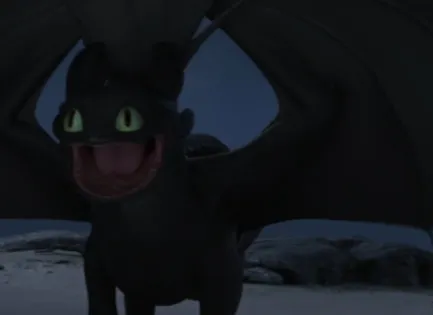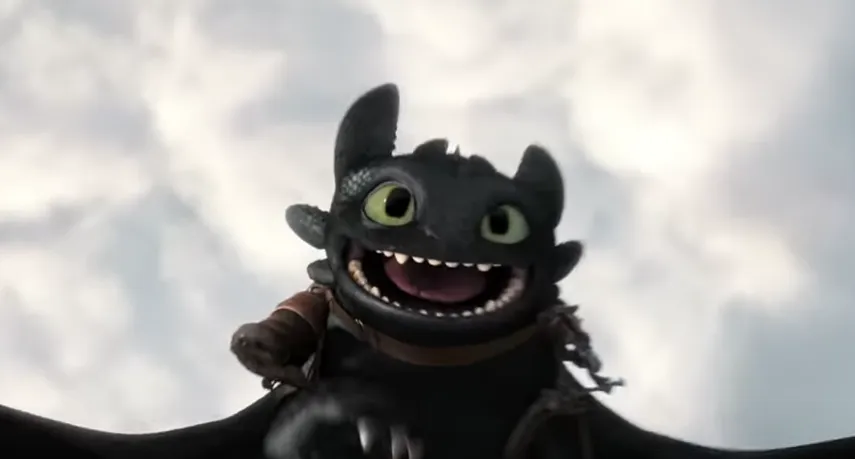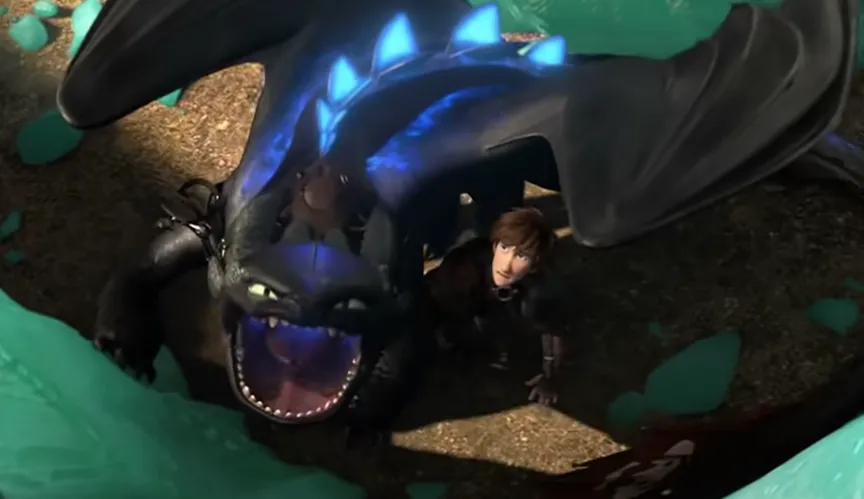Imagine a majestic dragon that leaps with feline grace, purrs like a contented cat, yet bounds with the unwavering loyalty of man’s best friend. That’s Toothless from How to Train Your Dragon, whose animation draws directly from real cat and dog behaviors. For pet owners, this cinematic hybrid offers valuable insights into understanding and nurturing the unique traits of cats and dogs, helping you build stronger bonds with your furry companions.
In the DreamWorks franchise, Toothless evolves from a wild, elusive creature to a devoted partner, mirroring how cats and dogs interact with humans. Animators faced a key challenge: basing his movements on authentic animal references to make him believable. This debate—cat-like independence versus dog-like loyalty—highlights fundamental differences in pet behaviors that every owner should know.
 Toothless design inspired by cats, dogs, and dragons
Toothless design inspired by cats, dogs, and dragons
Cat-Like Traits Dominate the First Movie
In the initial film, Toothless embodies classic cat behaviors, reflecting his initial distrust of Hiccup, the young Viking protagonist. Cats are naturally cautious predators, often taking time to warm up to strangers. Toothless mirrors this with lithe, agile movements, superior reflexes, and a noble grace—hallmarks of feline agility seen in everyday pets leaping onto high perches or stalking toys.
Animators deliberately leaned into cat references for authenticity. For instance, one scene involved taping a small object to a real cat’s tail to capture its startled reaction, directly informing Toothless’s response to a similar surprise. This technique underscores how cats prioritize independence and self-preservation, advising pet owners to give new cats space, use gentle enticements like toys or treats, and avoid forcing interactions. According to veterinary behaviorists, respecting a cat’s boundaries reduces stress and prevents scratches or hiding episodes common in multi-pet households.
Such cat-inspired animation teaches practical lessons: provide vertical spaces like cat trees for climbing, and engage through play that mimics hunting to build trust gradually.
 Toothless retracting his teeth like a cat
Toothless retracting his teeth like a cat
Transitioning to Dog-Like Loyalty in Sequels
As the series progresses, particularly in How to Train Your Dragon 2, Toothless shifts toward dog behaviors, becoming a fiercely loyal companion. Dogs thrive on pack dynamics and human bonds, eagerly following commands and offering unconditional affection. Animators amplified this by studying canine playfulness, tail wags, and enthusiastic greetings, making Toothless nuzzle and romp like a oversized puppy.
This evolution reflects real-life pet dynamics: while cats may bond selectively, dogs often attach quickly with consistent positive reinforcement. Insights from DreamWorks animators reveal they referenced puppy footage for Toothless’s exuberant flights and protective instincts. For dog owners, this means prioritizing training sessions with rewards, daily walks for mental stimulation, and socialization to channel loyalty into good behavior—preventing issues like separation anxiety.
Blending these traits creates balanced pets: cats gain confidence through routine, while dogs benefit from independent play zones.
 Toothless displaying playful puppy-like energy
Toothless displaying playful puppy-like energy
The Perfect Hybrid: Lessons from Wombats and More
Ultimately, Toothless becomes a composite of cat agility, dog loyalty, and quirks from other animals like horses, kangaroos, and wombats—known for curiosity and adorableness. This mix positions him as the “ultimate pet,” combining keen senses, speed, and devotion. Pet experts note similar hybrids in mixed-breed cats and dogs, where diverse traits enhance adaptability.
For owners of cats and dogs, Toothless illustrates hybrid training: use cat-like patience for independence and dog-style rewards for loyalty. Incorporate enrichment like puzzle feeders for cats’ smarts and fetch games for dogs’ energy. Sources from animation studios confirm these references boost realism, much like how vets recommend breed-specific care—Persians for grooming, Labs for exercise.
 Puppy inspiration for Toothless's loyal movements
Puppy inspiration for Toothless's loyal movements
Observing Toothless reminds us that understanding cat and dog behaviors fosters healthier, happier pets. Whether your cat ignores you until dinnertime or your dog shadows your every step, these traits are strengths when nurtured properly.
In conclusion, How to Train Your Dragon demystifies cat and dog behaviors through Toothless, offering pet owners actionable tips: respect feline wariness, reward canine devotion, and embrace their unique blend. Consult your veterinarian for tailored advice, and explore more pet care guides to elevate your furry friend’s life.
 Toothless as the ideal cat-dog hybrid animal
Toothless as the ideal cat-dog hybrid animal
References
- Animation Mentor: Animating Toothless Tips
- Empire Online: How to Train Your Dragon Designs
- Reddit: Toothless Tail Tape Scene Detail
- DreamWorks Animation Studios official insights on character development.
